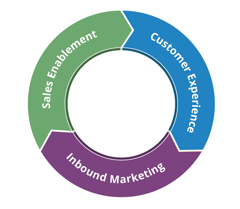With millions of businesses looking to compete for mindshare, having a strong and authentic brand is critical for businesses to differentiate themselves. First, you need to understand your brand identity. According to HubSpot: “A brand identity is made up of what your brand says, your values are, how you communicate your concepts, and the emotions you want your consumers to feel when they interact with your business. Essentially, your brand identity is the personality of your business and a promise to your consumers.”
Think of your brand as many assets comprising your name, terms, designs, symbols, and other features that identify your business. Your brand is not just your logo, and it cannot stop there when you’re building your brand. For example, when you hear Apple, you think of its innovation, commitment to service, sleek products, connection to its consumers, and more. This goes far beyond logos and imagery or even creative advertising campaigns. Their brand connects emotionally with their customers, and their customers feel a sense of intense loyalty to the brand.
As a marketer or business owner, you understand your brand. But sometimes, communicating your brand to your prospective audience is the challenge. While details like your font choice, logo, and tagline are important, your brand’s authentic voice will have the most significant influence on the hearts and minds of your readers.
So, how can you know what your brand's voice is so you can start to focus on authentically communicating with your audience? Imagine that your brand is a person. How would he or she act, look, and speak? Everything you say as a business, including your email marketing, tweets, social media updates, and blog posts, should convey this unique voice so that people can connect with your brand on a personal level.
Here are four steps to take when developing your brand identity to communicate more authentically with your audience:
1. Define Your Target Persona
Understanding your target persona is the first step in determining your brand voice. Identify your target market, where they search for information, and some of the personal elements that most resonate with them.
For example, if your target market is working mothers, you may want to consider how you market to this persona, as their interests and priorities are different from those of their single male colleagues. Once you know who your audience is, you can create content that speaks to them and delivers the most value based on their unique priorities and goals.
2. Determine Your Ideal Communication Channels
One of the most critical challenges in communicating your brand authentically is finding the channels that best align with your brand and the message you are looking to deliver. There are so many digital channels out there now that it's impossible to be everywhere and do a good job communicating authentically with your audience.
Think about who your personas are and where they spend the most time. For example, if you are a business-to-business (B2B) company, you may find that LinkedIn is a great social media channel and that email marketing is an effective way to get in touch with your consumer. Whereas if you are a business-to-consumer (B2C) company, Instagram or Pinterest may be better social media platforms, and text messaging may be a more effective communication channel. Find the channels that are going to resonate most clearly with your audience.
3. Understand The Message You’re Looking To Deliver
How you deliver your message and language is just as important as the actual content. Think of how you hope to present your brand to your audience. Are you more casual or professional? If you are more casual, you may want to consider things like using emojis or slang in your message. You may want to use more professional language if you are a B2B or a luxury brand. Whatever the case, be sure to stay consistent. The language and tone you use need to match your brand's personality on all channels.
4. Establish An Emotional Connection By Telling Stories
People love stories. They love stories that connect with them emotionally and drive them to the point of action. A strong brand identity can establish that emotional connection with consumers, the most solid foundation for building a lasting relationship with your brand. Stories also prompt people to share your content and invite people to directly engage with your brand and share your brand’s story on your behalf.
Always remember that your brand represents your business, mission, and vision to your current and potential customers. If you want to reach your audience, developing a distinctive voice that accurately and authentically communicates your brand is essential. Remember the important quote, "Branding is what people say about you when you’re not in the room."
Do you want to learn more about how you can connect with your audience online? I invite you to schedule a complimentary digital marketing consultation with a member of our team.


__Square.png?width=250&height=250&name=Marketing_Hub_(1)__Square.png)




.png?width=250&name=diamond-badge-color%20(1).png)
